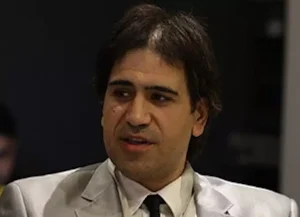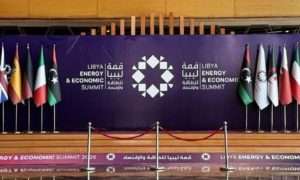Robin Mills: Are hydrogen cars and trucks the future?

Hydrogen-driven heavy road vehicles could be a useful contributor to the MENA region’s decarbonisation plans, particularly as it expands its mining sector and seeks to develop long-range trade corridors. But are they the real deal or just hot air?
Hollywood is hooked on hydrogen. American actress Jamie Lee Curtis once compared her Honda Clarity to a “rocket ship” and said that she would “sob uncontrollably” if it was taken away.
Mena Suvari (American Pie), Sean Astin (The Lord of the Rings) and Diane Kruger (Troy, The Bridge) are just a few other A-listers drawn to the silent, technologically-advanced machines that emit only water (something Kruger once proved by drinking exhaust on a tour through Death Valley, California).
But while hydrogen cars might frequent Sunset Boulevard, they are rarely seen on the roads driven by the rest of us. Is that about to change?
After the success of its Prius hybrid, Toyota pushed hydrogen cars as its environmentally-conscious offering. Hydrogen-powered cars have a longer range than most electric vehicles, and are much quicker to fuel up.
But Toyota’s focus on hydrogen hurt the Japanese giant, which has been slow to advance electric cars and lost its early lead not just to Tesla but to legacy rivals and Chinese upstarts.

For now, the cost of battery cars is dropping, range is improving, there are many more models on the market, charging stations are increasingly common and electricity is cheap compared to road-fuel hydrogen (or even petrol or diesel). Last year, 10.5 million plug-in vehicles were delivered to customers.
By contrast, hydrogen cars are extremely rare: just 15,391 were sold worldwide in 2022, and in their original home, Japan, sales dropped sharply compared to 2021. About half of all sales are in a single market, South Korea.
They are also expensive. Toyota’s Mirai retails for $49,500 in its basic version, and there is only one other model on the market, Hyundai’s Nexo (the Honda Clarity ended production in 2021). These vehicles suffer from the chicken-and-egg problem, there are currently very few fuelling stations, which will not change until the cars themselves are more common.
Finally, hydrogen at the pump is a costly fuel. In California, prices have shot up from $16 to $25 per kilogramme, roughly equivalent in energy to a gallon of petrol, which retails for $3.58 on average. Prices of natural gas, the feedstock for hydrogen sold today, rose, but the main culprits are the small volumes and transport and storage, which push up the customer price well beyond the raw production cost.
But is there nevertheless hope for hydrogen in ground transport? With the right strategies, like a focus on freight, there can be.
Batteries for electric trucks or coaches are very heavy, which limits legal loads. Electric ranges are also low: Currently, an e-truck can go 300 kilometres on a single charge. A fuel-cell truck, meanwhile, can travel 500 kilometres today and perhaps three times that in the future.

Moreover, charging rates for big trucks are huge, 25 megawatts for a filling station to service 50 trucks in two hours, or more than 20,000 average US households, which would require a major reinforcement and expansion of the electric grid, especially in remote locations.
By contrast, low-carbon hydrogen fuel can be made from natural gas (called “blue” hydrogen) or renewable electricity (“green”) for between $1.50 to $3 per kilogramme, significantly cheaper than oil-derived fuels. Unlike electricity, hydrogen can be stored easily for long periods. Vehicles are quick to refill and hydrogen is light, (though the high-pressure onboard tanks that hold it are heavy).
From the big picture of global decarbonisation, truck makers and road haulage companies must approach net-zero carbon dioxide emissions by the 2040s. Hydrogen fuel-cells, which do not have bottlenecks with supply of critical minerals such as lithium, cobalt and nickel, might be the fastest way to get there.
BloombergNEF forecasts that fuel-cell heavy trucks could be nearing economic competitiveness with both battery and diesel models by 2030. For that to happen, the cost of fuel cells would need to fall from about $280 per kilowatt today to below $150 per kilowatt, and of hydrogen to about $5.50 per kilogramme. Those targets look achievable, particularly in areas close to hydrogen production. If hydrogen stations were spaced along a few major trucking routes, there might not need to be very many.
Hydrogen vehicles could also be used in near-continuous operations, such as forklifts, port lorries and mining trucks. Trains are another possibility; the Elbe-Weser Railroad Company in northern Germany operates several hydrogen trains.
Hydrogen use by trucks could expand from virtually zero today to five million tons by 2040 and as much as 30 million tons by 2050. Projections of global hydrogen consumption for all uses could climb to 600 million tons in the same time frame. Amazon has signed a deal with Plug Power to provide hydrogen, while both it and UPS are interested in the vehicles.
Hydrogen-driven heavy road vehicles could therefore be a useful contributor to the Middle East’s decarbonisation plans, particularly as it expands its mining sector and seeks to develop long-range trade corridors.
The largest countries, such as Saudi Arabia, would benefit most. A cross-country lorry could fill up with blue hydrogen at Jubail on the Gulf coast, refuel perhaps once along the 1,800 kilometre drive, deliver its load to Neom and refill with green hydrogen for the return journey, taking about 19 hours in all excluding rest breaks. The same trip in an electric truck would need three charging stops and take about five hours longer.
Ground transport will not lead the demand for hydrogen, so the region’s ambitious green energy plans will have to be justified on demand from industry and transport. This will not happen spontaneously. If Middle Eastern countries want a significant role for hydrogen trucks and buses, they must make the fuel readily available at reasonable prices, and work with auto-makers to order and produce the vehicles.
If hydrogen transport has a future, it is less glamorous Hollywood celebs, and more sweaty truckers.
Robin M. Mills is CEO of Qamar Energy, and author of “The Myth of the Oil Crisis.” This article originally appeared in the Arab Weekly
Want to chase the pulse of North Africa?
Subscribe to receive our FREE weekly PDF magazine












